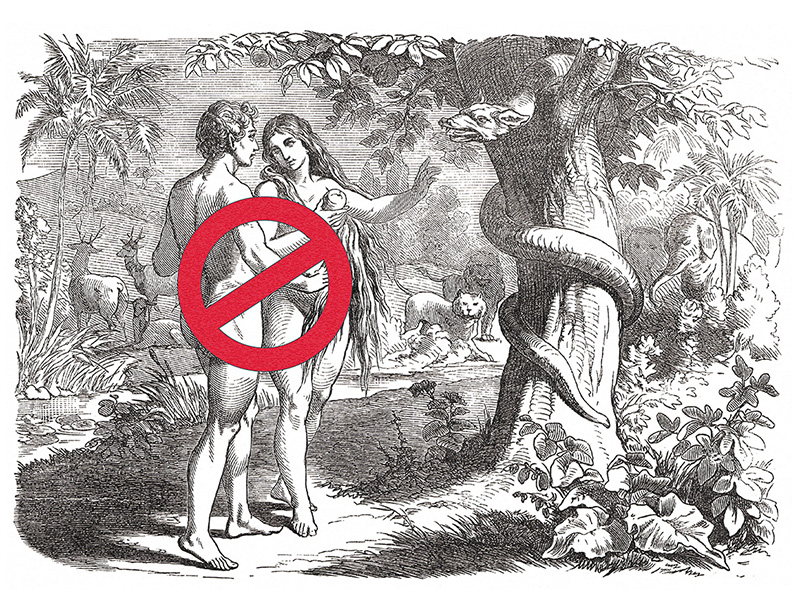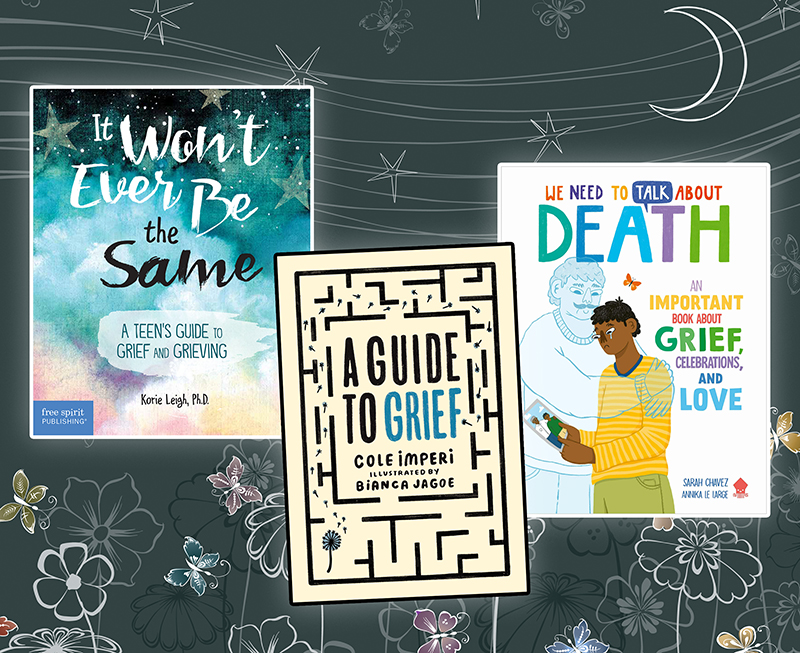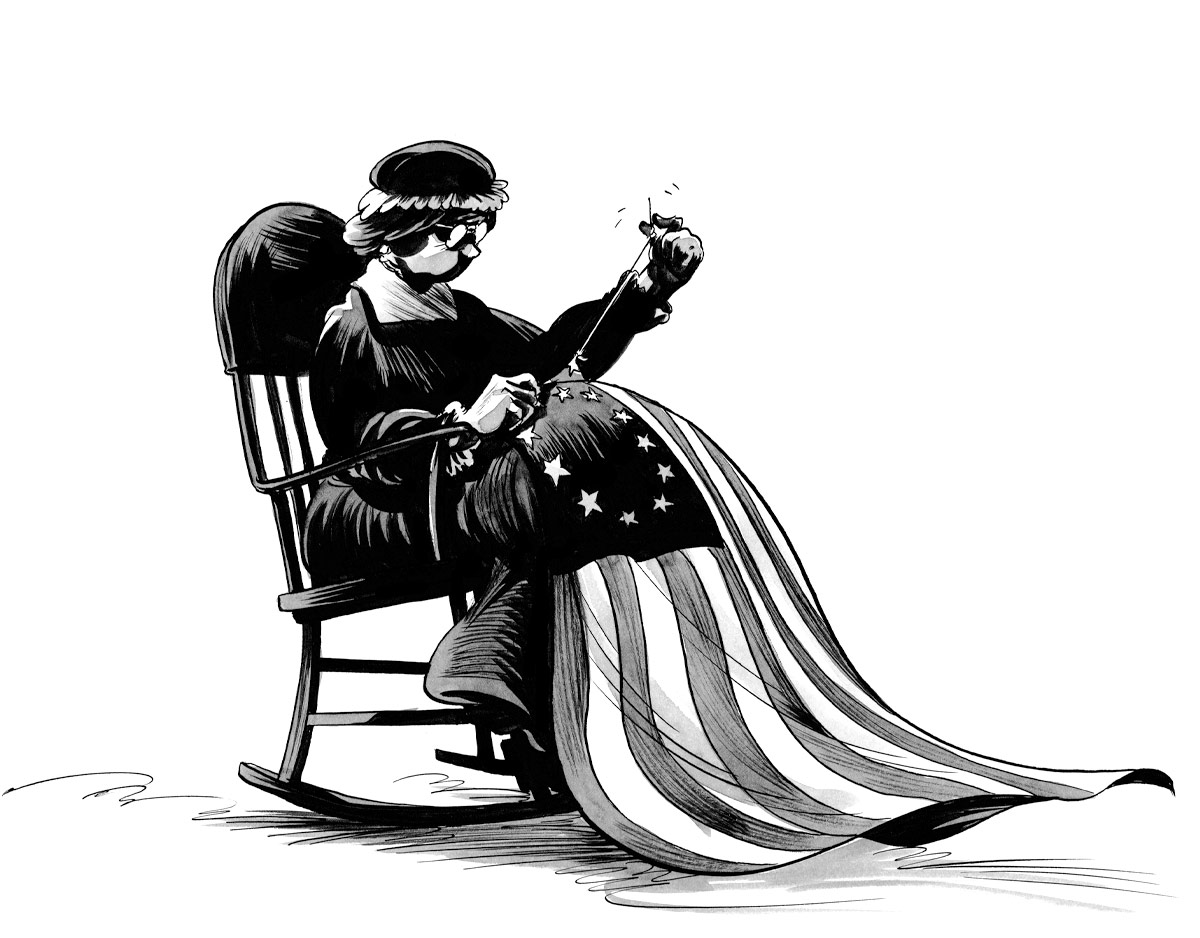31 Days, 31 Lists: 2020 Translated Picture Books

NOT to be confused with the previously seen Caldenott list (though there is some crossover on a title here and a title there). Today we celebrate the books from other countries that struck me as particularly interesting in 2020. Lest you be put off by the number of book mentioned here, I will tell you that I’m extraordinarily picky when it comes to translated titles. Just because something comes from another country, that does not mean it’ll work particularly well for the American market. These books, however, figured out how to appeal. Whether they sport an original idea, a great translation, or scintillating art, there’s something to enjoy in each and every last one of these books.
2020 Translated Picture Books
The Christmas Feast by Nathalie Dargent, ill. Magali Le Huche
[Translation – French]

My Lucky Day by Keiko Kasza but jacked up to 11. When a fox (who lives in a pretty interesting living situation with a wolf and a weasel) steals a turkey for a Christmas dinner he has NO idea what he’s getting himself into. Not only does the turkey immediately take charge, but she’s one smart cookie. She whips those three villains into shape, having them cook and clean and pretty much reassess their sad, sorry lives. And when, at last, it’s time for them to prepare her for Christmas dinner a couple weeks later (“I would like to be flambéed… But the recipe is quite difficult. Will you be able to manage it?”) they don’t want to. Christmas books, I know ALL too well, are supposed to be hopeful and heartening. Here in America the snark gets ironed right out. Leave it to the French to make something satiric with a bit more bite. I’m still chewing over how I felt about that last shot of the turkey reading a book called “The Best Recipes for Stuffed Wolves, Foxes, and Weasels”. Like I say. Snark city.
ADVERTISEMENT
ADVERTISEMENT
Doctor Mouse by Christa Kempter, ill. Amelie Jackowski, translated by David Henry Wilson
[Translation – Switzerland]

Ah ha! Jolly good. Doctor DeSoto this isn’t. Doctor Mouse is not your usual MD. Every morning he opens his barn doors, hangs up his sign (“Consultations from sunrise to sunset”) and waits. The rules are simple. There are six chairs and Doctor Mouse will not begin consultations until all six chairs are filled. It’s a bit peculiar, but as you come to see, most animals aren’t coming to the Doctor for physical ailments but for personal ones. Ms. Chicken is convinced that a ghost is moaning under her bed, and Mr. Dog is bored and in need of friends. Ipso facto, Mr. Dog will help out Ms. Chicken and she, in turn, will help out Mr. Dog. It continues in this manner, with each animal helping another that has arrived and vice versa. It’s a funny, strange, sweet book and I’m sure there’s some lesson to be derived from everything but what that lesson might be, I’d be the last to know.
Every Color of Light by Hiroshi Osada, ill. Ryōji Arai, translated by David Boyd
[Translation – Japanese]

What is the purpose of the bedtime book? To lull the children to sleep is part of it, certainly, but what are you putting into those small brains in the process? On occasion, it might behoove us all to read to our children books that seep into minds. The evocative is not wasted on the young, no matter how often they yawn. To give yourself a sense of what I’m talking about, I recommend that you seek out this hypnotic Japanese import. Artist Ryōji Arai pretty much entranced me by the first page. Osada writes a simple, “Look, it’s raining” and on the bottom third of the page is a pond, surrounded by greenery, the thinnest of yellow pencil lines indicating the falling droplets. Arai has been in this game since 1990, by the way. In fact, in 2005 he won the Astrid Lindgren Memorial Award. I’m just grateful we get a chance to see his work now. Taking his cues from Osada, he is perfectly capable of bringing sentences like, “Wetter and wetter, the blues darken. So do the greens,” to life. I shiver deliciously every time I read this book (I particularly like it when I’m cozy inside and outside it’s raining). After the storm passes, the world revives, but the night has fallen. One could get so wrapped up in Arai’s exquisite writing that they miss Osada’s own gifts. With the aid of the talented David Boyd, the end of the book translates to a beautiful, “We’re all falling falling sound soundly asleep asleep . . .” I aspire to someday write a single sentence as succinct and perfect as this.
Everybody Counts: A Counting Story From 0 to 7.5 Billion by Kristin Roskifte, translated by Siân Mackie
[Translation – Norwegian]

A seek-and-find book for the 21st century. Every person has a story. Can you figure out what they are in this eclectic book that’s part puzzle part ode to humanity? Is it a counting book? A Norwegian counting book at that? Wasn’t too sure about this one at first and then I started playing along. It appears to be like a seek-and-find book at first. Pretty rote. That is, until you start to pay attention to what they’re asking you to seek. “Five people in a family. Three of them love reading. One of them is secretly in love.” Wait, what? The further in you get the more you start to get to know the characters that keep repeating. There’s a grand romance that begins in a library. There’s a crook somewhere in there. There are innocent people in jail! By using the counting book format, you begin to understand that every person you see in this great big wonderful world has a story that you’re not privy to. Why does the book go to 7.5 billion? So that you understand that this is the case for everyone. Looks simple. Ain’t.
From My Window by Otávio Júnior, ill. Vanina Starkoff, translated by Beatriz C. Dias
[Translation – Portugese (Brazilian)]

I wrack my brain trying to find the right words to describe this book. Busy? Not quite. Colorful, certainly. Alive? Maybe that’s the one I wanted. Júnior’s book is a paean to the favela in Rio de Janeiro (specifically Complexo do Alemão) and you’d think a book restricted to a view out a window would be limited. Yet Dias is just packing this book with so much life and color and sheer joy. In the “What Is a Favela?” Júnior acknowledges that there can be violence but this is a book about loving your home.
Garden Jungle by Hélène Druvert
[Translation – French]

I wonder. In the event that any American artist within the last decade did seriously commit to a book filled, as this one is, with the world’s most delicate and intricate paper cuttings, would it have a chance at the Caldecott? I suppose it would depend upon the quality of the writing and the storyline. Druvert, to her credit, does have a scarecrow of a plot on hand, for those who need such things. Young Tom is terribly bored, so when his mom tells him to play outdoors he doesn’t harbor much hope. Yet upon further inspection his yard becomes a jungle, his kitty a leopard, and a butterfly leads him deeper and deeper into his imagination. Druvert layers the images here, so that you truly feel that you too are pushing deeper into the trees and vegetation as you go. I also cannot stress enough the intricacy of the papercuts here. From the most delicate of fronds to the spaces between the leaves where light peeps in, this book feels like something ancient and precious all at once. And woe betide the child that is the first to rip it.
Goldilocks and the Three Bears by Gerda Muller
[Translation – French]

Anyone who knows me is perfectly aware that I’ve an inordinate fondness for fairy tales and retellings. This Goldilocks is done straight, but Muller’s art is just a wonder. First off, I liked very much that Goldilocks’ parents are roadies for a circus. Never seen that one before. The bears’ house is so meticulously laid out. In addition to the three bowls, chairs, and beds, if you look around you’ll also see three umbrellas, barrels, brooms, etc. and each one color coordinated. Goldilocks is less a hellion in this one, and doesn’t even break the baby bear’s chair. But I did appreciate that she has to grab her shoes when she leaps out of the bears’ home upon discovery. Also, I liked the bears yelling their disapproval as she ran off. She’s a more sympathetic Goldilocks than we usually encounter. This is one of those picture books that people are going to hold on to for years.
I Always Wanted One by Olivier Tallec
[Translation – French]

Not too too different from David Ezra Stein’s I’m My Own Dog, if I’m being honest. You may have seen this idea before, where the dog is (seemingly) the owner of the boy and not the other way around. One of the first interesting things about Tallec’s version is that it opens vertically rather than horizontally. I’ve always loved his art, and here he gives himself over to languid lovely spreads. The story is the right combination of silly and slightly wistful. Of course it deviates from Stein’s book most significantly in that you get to see the kid when they’re grown. Pretty cute.
I Can Be Anything by Shinsuke Yoshitake
[Translation -Japanese]

Hmm? What’s that? You don’t think it’s fair that I’m putting two Yoshitake books on the same list? Well, due to the fact that I am now his greatest fan, I think it’s more than fair. The thing about Yoshitake is that several things are usually true. The adults in his book look exhausted, and the kids are these perpetual sources of energy and animation. But best of all are his books’ senses of humor. Because it is a WEIRD sense of humor, and one that I dig very much. In this book, a little girl keeps asking her mom to guess what she is, but instead of always being something relatively easy like a teapot or a baby, sometimes she’s shellfish in miso soup or Mount Fuji or her mom peeling the skin off of her foot. The mom, who is a patient but rapidly deteriorating soul, eventually finds her daughter asleep mid-game, then is left wondering what her daughter was pretending to be. If I could, I would give you all multiple Yoshitake books and you would understand my passion. He is the utter and complete best.
I Dream of a Journey by Akiko Miyakoshi
[Translation – Japanese]

A furry hotel proprietor dreams of someday visiting far of lands and distant friends. Dreamlike imagery accompanies glorious light-filled scenes of laughter, friends, and travel. I think we can all relate. In this book Miyakoshi is back to high form. Nobody shows contemporary life with fuzzy woodland creatures as well as she does. I wish I knew what medium this was published in because the art is the best she’s ever done. I love how it starts out black and white and then slowly the colors just bloom on the page. This may be the greatest tribute to solitude and travel for kids I’ve ever seen. And just look at what she’s doing with light! I could read this 100 times and never get tired of it. Don’t forget to look at the back cover when you get a chance.
Lemon Butterfly by Cao Wenxuan, ill. Roger Mello
[Translation – Chinese]

Around the world, these two are superstars. Here in America? We’re not great on international children’s book creators if they don’t fall into mighty specific parameters. This book is pure Wenxuan, though, right down to the lingering melancholy. A “lemon butterfly” (Papilio demoleus, perhaps?) seeks a field of flowers. It ventures through valley, desert, city, and more. At last, it smells flowers in the hoofprints of a horse, and follows them backwards. Alas, the field it seeks has been submerged in a sudden lake. The solution? It rests and becomes a “lemon butterfly fish” (or millet butterflyfish). Mello gets to stretch his muscles a little with this. He matches the wistfulness of the words perfectly, and gets to experiment with different patterns, styles, angles, and sometimes fonts. It’s a very cool gesture. Whether you believe the butterfly actually became a fish . . . well, I’ll leave that to you . . .
Little Bear’s Treasures by Stella Dreis, translated by Laura Szejnmann
[Translation: German]

This little Austrian import was a heck of a nice surprise when I saw it. The story itself is quite cute, of course. I think the human hand is unlimited when it comes to the ways in which bears can be illustrated in children’s books. The story is of a little bear that sees treasures in ephemera wherever it goes. No one shares its enthusiasm until it meets a bird with a similar p.o.v. And the art is exceedingly appealing the way that it is drawn. Still, it wasn’t until I got to that final image of the bear and the bird from behind that I found my breath truly taken away. The bear and the bird in the book are quite young and there’s this cute shot from behind of the two of them. The last image is a dream they have, ostensibly of themselves, and once again they are seen from behind but something is different. The bear is noticeably taller, drooping slightly with age. The bird, larger and perhaps those are grey feathers on its back. It’s a blink-and-you’ll-miss-it moment, but absolutely unforgettable.
Little Fox by Edward Van de Vendel, ill. Marije Tolman, translated by David Colmer
[Translation – Dutch]

A little fox dreams its entire life, the good, the scary, and the wonderful in this deeply charming Dutch import. I can’t tell… is it more gorgeous than charming or more charming than gorgeous? Whatever the case, it’s one of my favorites of the year. How can it not be? The book is this marvelous combination of illustration and photography. A little fox’s entire life passes before its eyes, going through the day-to-day living of what it’s like to be a fox in the wild. From its limited color palette to the clever ways in which backgrounds repeat strategically, it’s hard not to fall in love with this book. Extra points for those stunning orange endpapers of trees.
Sandcastle by Einat Tsarfarti, translated by the S.B. Rights Agency
[Translation – Israel]

One day a girl built a sandcastle. So begins a ludicrously told, meticulously illustrated story of spoiled royalty, incredible opulence, and the way sand has a way of getting into EVERYTHING! Okay, I’ll admit right here and now that I wasn’t giving this book a fair shake when I first glanced at it. I think I’d convinced myself that I’d already read it or something. A quick read was enough to convince me otherwise. This is amazing! I completely missed the detail of the hamster, but the scene of everyone dancing has my eternal love. This is a bonafide winner.
The Shadow Elephant by Nadine Robert, ill. Valerio Vidali, translated by Sarah Klinger
[Translation – French]

Do you, by any chance, happen to remember the book The Rabbit Listened by Cori Doerrfeld? I’m not exaggerating when I say that I think about that book at least once a week. It is, for me, a guide for grief. Few books can match it but this fascinating French/Canadian import (L’éléphant de l’ombre) presents a similar situation. In it, an elephant is beset by sadness. It would just like to stay in the shadows, but a host of other animals are insistent on drawing it out. Everything from a monkey to high-heel wearing ostriches (which, I’m not going to lie, I found awesome) to a food-bearing crocodile. The elephant, who has these bags under its tiny eyes that speak volumes, is not happy with any of this. Finally, a mouse comes. It doesn’t want to try to cheer the elephant up. It just wants to rest. And so, in time, it tells the elephant its story and the pachyderm, in turn, sobs. “Drained of tears and feeling much better,” the elephant resolves to help the mouse with its problem. It’s not quite as clean as Doerrfeld’s book, but I liked very much the similar idea that sometimes we just need someone patient and nearby when we’re low. A good book to have around.
The Sorcerer’s Apprentice by Gerda Miller +(BB)
[Translation – French]

Another Gerda! According to this book, the famous German writer Johann Wolfgang von Goethe wrote the original poem of “The Sorcerer’s Apprentice” in 1791, “inspired by a story told to him by his maid.” One ponders how this came up in the first place. I, for one, want to know more about that maid. In lieu of that, I’ll have to be content with this meticulously rendered edition of the old tale. If you’ve watched your Fantasia then you may have seen Mickey Mouse try to get out of his chores by enchanting a broom. That’s fairly faithful to the original tale, but rather than set the story in a castle, Miller puts the boy and a low-key sorcerer named Alfred in a homely little house in a village. When the water really gets going there’s a kind of Strega Nona vibe to the calamity. All ends well, and the sorcerer forgives the apprentice. I just love the last sentence in the book: “After many years of listening and learning, Oliver became the village sorcerer. And he was almost as wise as Alfred.” Certainly the best version of this tale I’ve seen to date. Accessible and enjoyable.
The Stone Giant by Anna Höglund, translated by Julia Marshall
[Translation – Swedish]

Sounds like an old video game. You need to defeat a giant. You have only an umbrella, a knife, and a mirror. Go. It is exceedingly difficult for a contemporary author/illustrator to tap into the classic feel of old fairytales. In this original one, Höglund does just that. Using a limited color palette of grays and red (the art is made with copper plate etchings and watercolors) she tells the story of a girl that lives on an island with her father, a knight. One day the knight goes off to defeat a giant that is turning everyone to stone. When he doesn’t return, his daughter sets off to rescue him. There are so many small, wonderful aspects to this story. I loved that the girl figured out how to defeat the giant early on, and then when she meets a friendly old woman on her path she is told how to do it. “That’s what I thought… thank you very much.” So polite! Extra points for making the giant female without making a whole big deal about it. Sometimes you just like the feel of a book. That’s the case with this one. Just the best.
A Sweet Meeting on Mimouna Night by Allison Ofanansky, ill. Rotem Teplow
[Translation – Hebrew]

Mimouna, the Moroccan Jewish holiday, is the star of this beautiful little book. I’d not heard of Mimouna before, but Ofanansky does a great job of explaining it bit by bit, piece by piece. On the last afternoon of Passover, Miriam’s family is getting ready to bake all kinds of Mimouna treats, like moufletot. The trouble? When the sun goes down, where can you find flour? Like many Jewish families in Morocco, Miriam and her mother go to a Muslim neighbor’s home, where a flour pick-up has already been arranged. There Miriam meets Jasmine, and later she and her family arrive in Miriam’s home for the celebration. But by the time Jasmine’s able to invite Miriam to Ramadan, she’s moved to Israel. A year later Mimouna comes around and Miriam, wistful, thinks of Jasmine and whether or not she’ll be waiting for her that night. Waiting, but never going to see her again. It’s bittersweet ending to a book that does an excellent job of showing the interconnectedness of kind neighbors to one another. An explanation of Mimouna and a recipe for Moufletot appear at the end. Extra points to Rotem Teplow, whose art lends the piece precisely the right feel. You won’t even know you’re reading a translation with this book. It feels just that natural.
Thank You, Miyuki by Roxane Marie Galliez, ill. Seng Soun Ratanavanh, edited by Amy Novesky and Parker Menzimer
[Translation – French]

Probably the best mindfulness picture book I’ll ever have the pleasure to meet. This is by no means the first Miyuki book to come out in America. I’d already read Time for Bed, Miyuki and Patience, Miyuki but while their art enthralled me, the storylines were just a nice kind of okay. Nothing to necessarily write home about. In this latest title, Miyuki begs her Grandpa to show her how to meditate. She then proceeds to act EXACTLY like a small child would, never staying still, flitting about like a butterfly while her grandfather takes everything in slowly. And yet, by the end of the book, it turns out that Miyuki, in her own way, has been paying attention to the world around her. A book that beautifully brings to life Miyuki’s observation, “doesn’t it feel good to be here right now?”
There Must Be More Than That! by Shinsuke Yoshitake, translated by HAKUSENSHA, Inc.
[Translation – Japanese]

Yeah, all right. That’s it. Someone go and convince Yoshitake to come live here in America. Surely you’ve run into one of his books at some point, whether it was The Boring Book or Still Stuck. He just has this quirky, skewed, weird little look at life that no one else can replicate. In this particular book an older brother tells his younger sister that in the future we’re going to run out of food due to overpopulation, there will be plagues and wars, and aliens will invade. Freaked out, the girl runs to her grandmother who reassures her that people have a terrible track record when it comes to predicting the future. She assures the girl that she can try to think up her own futures, and this leads to an extraordinary, kooky array of possibilities, all ending with a nice boiled egg. Tried this one out on my 6-year-old and yes indeed. Laughs ah-plenty. This is one sense of humor that translates with infinite ease.
This Is My Daddy by Mies Van Hout
[Translation – Dutch]

ADVERTISEMENT
ADVERTISEMENT
Mies Van Hout may be right up there with Herve Tullet as one of the international uncontested winners when it comes to board books for the young. Her style is unparalleled and, to be frank, downright gorgeous. The conceit is kind of cute too. First you meet a baby animal and then you have to pick between four possibilities as to who the father might be. It’s not as easy as you might think, particularly when you’re dealing with a baby rhino looking at a daddy hippo as option. The key, sometimes, is to get the little littles noticing the similarities in their bodies and coloring. I love how interactive the book is. One quick note: the spine does have a tendency to rip a little since the cover is made of that poofy material you sometimes find with board books. May not be great for libraries, but for gifts there are few to match it. Beautiful.
Wake Up, Let’s Play! By Marit Törnqvist
[Translation – Dutch]

Sometimes folks will make excuses for European children’s books and their significant lack of faces that aren’t white by saying that everyone over there IS white. Not hardly. This Dutch import puts that lie to the test with this incredibly sweet playtime between two young friends. It’s one of those little worlds where there are no grown-ups to interfere and plenty of birthday parties, sandcastles, blocks, stuffed animals, snowmen and more. I just love the thick colors and imagination at work in this marvelous little world built for two. People call books “dreamlike” far too often. This is the kind of book that will mysteriously crop up in children’s dreams years and years after they read it. If that appeals, grab it for yourself.
The World’s Poorest President Speaks Out, edited by Yoshimi Kusaba, ill. Gaku Nakagawa, translated by Andrew Wong
[Translation – Japanese]

So you wanna write a picture book about how we should consume less? Well good luck in finding a hook, my friend. Honestly, where would you even begin? A smart way might be to look for a real world example of someone who lived an ascetic but appealing life. What about a president? What about the President of Uruguay? This book chronicles an actual speech given by President José Mujica at the 2012 United Nations Conference on Sustainable Development. Now don’t go slapping this into your Nonfiction section of the library, necessarily. Though the sentiments of this book are true, the words have been rewritten to fit a picture book audience. Part of what’s so fascinating about this particular book is that it is a translation from the Japanese original. Apparently Mujica is a huge deal in Japan and that accounts for this book’s origins. The message of simply wanting less and appreciating more is admirable, and the art is gorgeous. It’s a book with a clear message, absolutely, and the package and telling so nice that you might think twice about wanting that new doodad you had your eye on the other day.
Your House, My House by Marianne Dubuc, translated by Yvette Ghione
[Translation – French]

You’ll find Quebec translations having quite a moment in picture books this year. You have perhaps crossed paths with a Dubuc title in the past. This book is a bit of a departure for her. It’s as if she thought to herself, “What would happen if you crossed Richard Scarry with Allan Ahlberg?” and then decided to give it a go. This book (originally called “Chez toi, chez moi”, which is fairly adorable) features one apartment building and all the animals that live in it. This includes animals that are moving in, animals that are rushing to the hospital, animals that are hosting parties, sick animals, naughty animals, and more. This is one of those books where the layout of the apartment building never changes. As a result, you spend a countless amount of time poring over every little room. I like these books personally because I never feel more like a five-year-old, overconfident in her own abilities, than when I can spot something the creator has hidden in the background. In this case, the run of fairytale characters that cameo behind the action was fun to find. This isn’t one of those books that keeps pointing out the elements you have to locate. As a result, they feel like little treasures when you discover them. Expect this one to be read over and over again.
Want to see other lists? Check out what happened this month!
December 1 – Great Board Books
December 2 – Board Book Reprints & Adaptations
December 3 – Transcendent Holiday Picture Books
December 4 – Picture Book Readalouds
December 5 – Rhyming Picture Books
December 6 – Funny Picture Books
December 7 – CaldeNotts
December 8 – Picture Book Reprints
December 9 – Math Books for Kids
December 10 – Bilingual Books
December 11 – Books with a Message
December 12 – Fabulous Photography
December 13 – Translated Picture Books
December 14 – Fairy Tales / Folktales / Religious Tales
December 15 – Wordless Picture Books
December 16 – Poetry Books
December 17 – Unconventional Children’s Books
December 18 – Easy Books & Early Chapter Books
December 19 – Comics & Graphic Novels
December 20 – Older Funny Books
December 21 – Science Fiction Books
December 22 – Fantasy Books
December 23 – Informational Fiction
December 24 – American History
December 25 – Science & Nature Books
December 26 – Unique Biographies
December 27 – Nonfiction Picture Books
December 28 – Nonfiction Books for Older Readers
December 29 – Best Audiobooks for Kids
December 30 – Middle Grade Novels
December 31 – Picture Books
Enjoy!
Filed under: 31 Days 31 Lists, Best Books, Best Books of 2020
About Betsy Bird
Betsy Bird is currently the Collection Development Manager of the Evanston Public Library system and a former Materials Specialist for New York Public Library. She has served on Newbery, written for Horn Book, and has done other lovely little things that she'd love to tell you about but that she's sure you'd find more interesting to hear of in person. Her opinions are her own and do not reflect those of EPL, SLJ, or any of the other acronyms you might be able to name. Follow her on Twitter: @fuseeight.
ADVERTISEMENT
ADVERTISEMENT
SLJ Blog Network
One Star Review, Guess Who? (#211)
Kevin McCloskey on ‘Lefty’ | Review and Drawn Response
Notable NON-Newbery Winners: Waiting for Gold?
The Seven Bills That Will Safeguard the Future of School Librarianship
Take Five: Newbery Picks, Part Two
Gayle Forman Visits The Yarn!
ADVERTISEMENT








I made a personal goal this December to leave a comment each day on all 31 Days, 31 Lists. I started out just fine but quickly fell off the wagon when this thing called “life” interfered. Yesterday I caught up and this morning really took lots of time to carefully read every word you wrote about these books. A wonderful group of titles previously encountered in Days 1-12 plus new books to meet for the first time. I like this mixture and have no problem reading about the same book again because I believe this inclusion adds depth to the theme of each List.
I’ve mentioned previously that I am all in favor of greater and greater recognition of books written, illustrated, and published outside the USA. Regardless of our current President’s point of view, I’m more in favor of recognizing the contributions of folks from all over the world. Fantastic accomplishments are happening everywhere on our shared planet and today’s technology allows us to be closely connected to each other from all over the world. Those who share Zoom events with people in far away locations know this. Our USA only awards are fine, but I believe it is time to also recognize and showcase books for children created everywhere. You have certainly done so in today’s list and provided motivation for another trip to the bookstore!
In answer to your question, Betsy, yes, yes, yes. I do remember and own The Rabbit Listened and completely agree that it demonstrates perfectly the best gift we can offer those who are grieving. I can’t wait to get my hands on THE SHADOW ELEPHANT as well as ALL others you shared today.
I’m very curious about the reason The Rabbit Listened comes to your mind “at least once a week”
How I love December and the daily gifts from you!